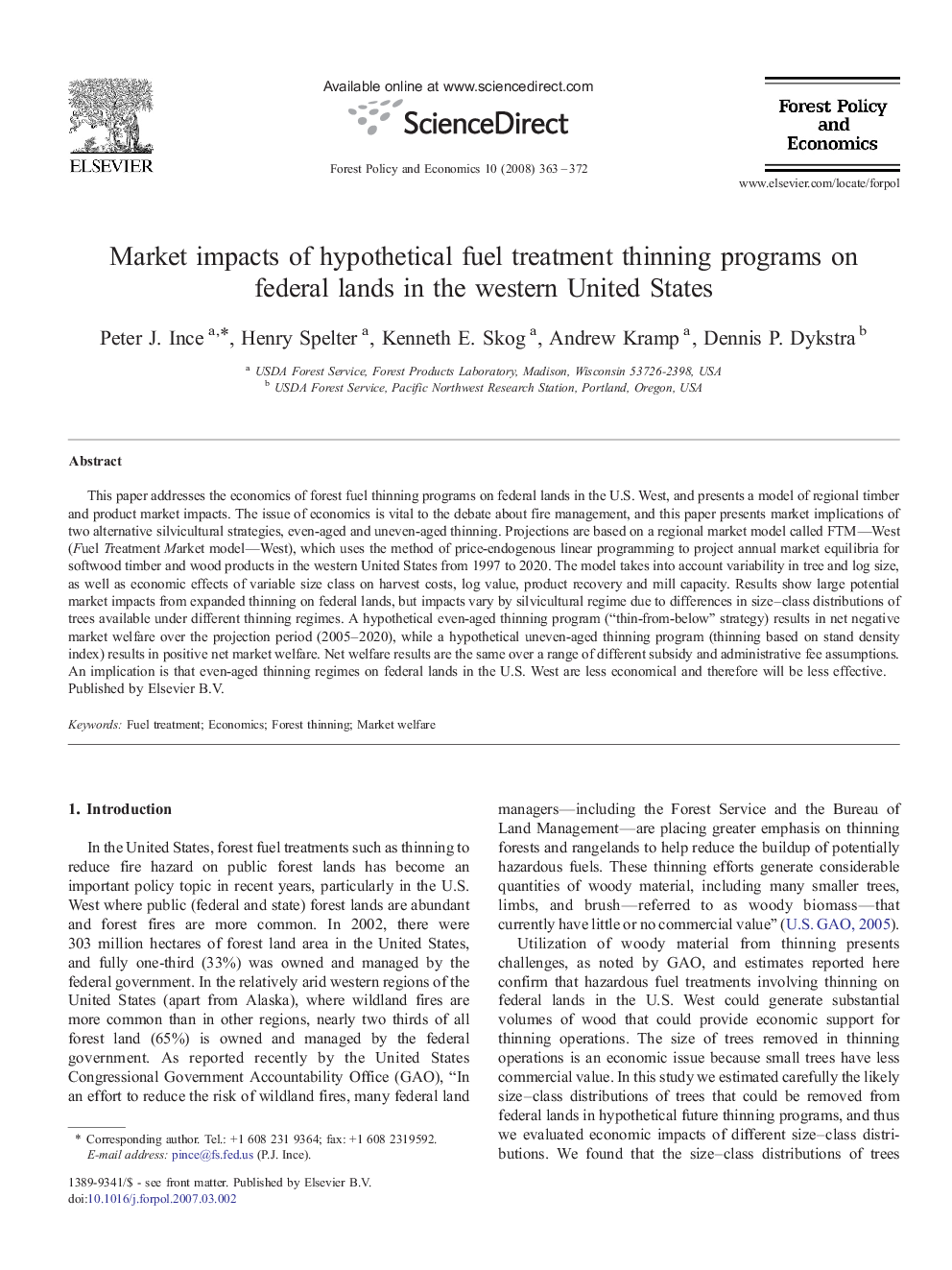| Article ID | Journal | Published Year | Pages | File Type |
|---|---|---|---|---|
| 91531 | Forest Policy and Economics | 2008 | 10 Pages |
This paper addresses the economics of forest fuel thinning programs on federal lands in the U.S. West, and presents a model of regional timber and product market impacts. The issue of economics is vital to the debate about fire management, and this paper presents market implications of two alternative silvicultural strategies, even-aged and uneven-aged thinning. Projections are based on a regional market model called FTM—West (Fuel Treatment Market model—West), which uses the method of price-endogenous linear programming to project annual market equilibria for softwood timber and wood products in the western United States from 1997 to 2020. The model takes into account variability in tree and log size, as well as economic effects of variable size class on harvest costs, log value, product recovery and mill capacity. Results show large potential market impacts from expanded thinning on federal lands, but impacts vary by silvicultural regime due to differences in size–class distributions of trees available under different thinning regimes. A hypothetical even-aged thinning program (“thin-from-below” strategy) results in net negative market welfare over the projection period (2005–2020), while a hypothetical uneven-aged thinning program (thinning based on stand density index) results in positive net market welfare. Net welfare results are the same over a range of different subsidy and administrative fee assumptions. An implication is that even-aged thinning regimes on federal lands in the U.S. West are less economical and therefore will be less effective.
